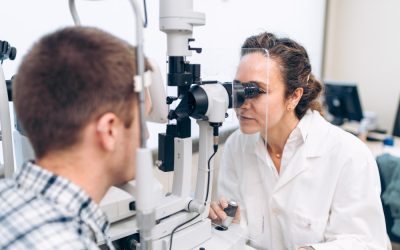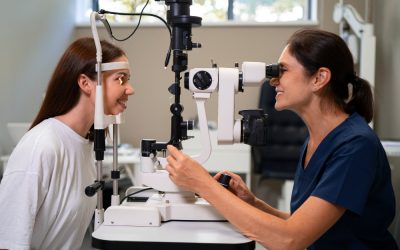Understanding Contoura LASIK: Benefits, Procedure, and Recovery Explained

Laser eye surgery has come a long way from its early days. From radial keratotomy’s precise cuts to today’s Contoura LASIK, there have been big changes. At first, surgeries were more invasive with basic techniques being used. But over time, lasers brought higher precision, changing everything about these procedures. Now, they’re safer and less invasive, providing better results.
Contoura LASIK is the latest breakthrough in vision correction technology. This method changes how we correct eye problems for each person. Unlike older ways, Contoura LASIK focuses on small corneal flaws for better results. It enhances both common and uncommon eye issues for many people. Patients enjoy custom treatment, aiming for clear vision beyond just fixing eyesight issues.
What is Contoura LASIK?
Contoura LASIK is a modern eye surgery improving upon traditional LASIK procedures. Unlike older versions, it personalizes treatment using detailed maps of the eye. By examining over 22,000 unique spots on the cornea, it plans a custom correction strategy. This attention to detail addresses not just the main issue but enhances overall vision clarity.
Contoura LASIK has earned FDA approval, a marker of its safety and effectiveness today. This approval highlights its trustworthiness and innovation in correcting vision problems. It initially focused on common sight issues but now handles more complex cases too. The technology within uses topographic scans to guide precision laser corrections on the cornea.
Topographic mapping sets Contoura LASIK apart with its precision and detail attention. The process involves capturing every rise and dip on the corneal surface for each eye specifically. With such specific data, the excimer laser performs adjustments more accurately than ever before. This results in a personalized procedure ensuring the best possible vision improvement outcomes.
The Distinct Advantages of Contoura LASIK Over Traditional Procedures
Personalized mapping in Contoura LASIK brings unmatched accuracy to laser procedures. Each eye gets a tailored map, enhancing precision over older methods. This customization highlights corneal features unseen before, improving error correction and clarity. Precise reshaping results in fewer residual vision problems and clearer sight.
By correcting corneal irregularities, Contoura LASIK improves how patients see after surgery. Traditional LASIK mainly changes the cornea’s overall shape, but Contoura fixes finer details. Aligning the whole cornea means many might not need glasses much anymore. Patients notice enhanced detail in their vision once these irregularities are resolved.
One great thing about Contoura LASIK is it reduces glare and halos significantly. Basic laser surgeries often miss this, leaving people with nighttime visual discomfort. Contoura’s precise work lessens these effects, giving better night vision too. Patients enjoy clearer views in low light, increasing everyday comfort.
Contoura LASIK: Step-by-Step Procedure
Before starting with Contoura LASIK, patients need some key preparations. A thorough eye exam and corneal topography are required steps in this process. This important, non-invasive procedure maps many elevation points of the cornea precisely. It helps the surgeon plan the surgery based on each patient’s unique corneal structure. Mapping the eye like this makes the surgery more personalized and successful.
The Contoura LASIK procedure begins with making a thin flap in the cornea. The femtosecond laser is used to do this with precision and care, reducing chances of problems significantly. After the flap is made, the EX500 excimer laser reshapes the cornea using the custom map made earlier. This two-step laser process ensures precise corrections as planned.
The whole Contoura LASIK procedure generally lasts only about 30 minutes. During this time, patients might feel a little pressure in their eyes, but no pain is felt thanks to numbing drops given before the start. The quickness of this surgery surprises many people and highlights how advanced laser technology is now. Most patients notice better vision right after it’s done.
Identifying Suitable Candidates for Contoura LASIK
A perfect candidate for Contoura LASIK is usually aged 18 to 50. Having a stable eye prescription during these years is also necessary. People with mild-to-moderate vision issues, like myopia and astigmatism, may find relief. Good eye health is vital; one must not have diseases like keratoconus or severe dry eyes. Meeting these standards ensures that the procedure is effective and safe.
Contoura LASIK can tackle various common vision problems, including myopia and astigmatism. Traditional LASIK treats these issues too, but Contoura LASIK goes one step ahead by addressing less common irregularities. This wider range of conditions makes it attractive for people wanting overall visual improvement.
Despite its many benefits, not everyone can opt for Contoura LASIK. Some conditions rule out individuals, like big problems with the cornea or glaucoma. People with autoimmune disorders like lupus might experience slow healing, making them unsuitable. Consulting an ophthalmologist is essential to check if someone fits for the surgery or not.
Exploring the Benefits of Contoura LASIK
Contoura LASIK increases the odds of seeing clearly at 20/20 or better. Patients often see big improvements in how well they can see after surgery. The customized procedure uses precise technology to create ideal results.
Individuals feel a notable change in everyday life, thanks to Contoura LASIK. Many people enjoy not needing glasses or contacts anymore. This gives them more freedom and confidence, making activities easily doable without extra help. Feeling satisfied and less burdened reflects the true value of this eye surgery.
People heal faster with Contoura LASIK, returning to routines quickly after surgery. Following simple recovery instructions helps achieve this quick comeback. Better night visibility is another perk with fewer glares from lights at night. The improved sight at night creates safer and more comfortable experiences in low light.
Considerations and Risks Associated with Contoura LASIK
While Contoura LASIK offers a strong track record for precision and effectiveness, some temporary side effects are common. Patients usually notice dry eyes, leading to discomfort and irritation shortly after surgery. These symptoms generally improve in a few weeks as your eyes recover from the procedure. Your doctor might suggest using artificial tears or eye drops to ease these issues during recovery.
Though complications with Contoura LASIK are not common, they can happen. Some people might see vision changes like glare, halos, or slight undercorrections. These are uncommon thanks to advanced technology but still possible. It’s crucial to have realistic expectations—not everyone achieves perfect 20/20 vision, as results depend on individual cases.
Following through with Contoura LASIK post-operative care is vital for success. Regular check-ups after surgery help your doctor track healing and modify any necessary treatments. These visits are key to ensuring the health of your operated eyes and making sure any issues are addressed quickly. This helps maintain long-term stability and satisfaction with the surgery.
Navigating the Contoura LASIK Recovery Journey
In the initial two days post-Contoura LASIK, patients may notice variations in vision clarity as healing begins. It’s normal to feel some discomfort, treatable with prescribed drops or medications. Resting your eyes and avoiding any demanding activities are important during this time.
Improvement in vision might be visible soon after surgery occurs. Yet, achieving the best results could take a few weeks. While clarity may change initially, most people resume normal routines within a few days. Complete healing happens over a few months, allowing the cornea to settle and adjust to changes.
Essential eye care after surgery is key for smooth recovery. Wearing protective eyewear, especially when sleeping, helps avoid accidental rubbing or strain. Limiting screen time and bright light exposure is beneficial early on in recovery. Following your surgeon’s guidelines, such as not wearing makeup or getting water in your eyes, is vital for fast and safe healing.
Considering the Future: Advancements and Final Thoughts
Contoura LASIK offers a great leap in eye surgery, focusing on using topographic maps. It advances accuracy and tailors solutions for each eye, ensuring favorable results. Many individuals notice improved clarity and experience fewer issues compared to LASIK before
Engaging with a vision expert remains vital, even considering Contoura LASIK. Evaluations help confirm if one can have the procedure safely. Understanding differences between Contoura and epi Contoura is crucial for informed choices and safety.
Today’s LASIK options, including Contoura LASIK, offer safe paths for vision correction and meet many needs. With growing technology, treatments address broader vision matters, helping make confident decisions through guidance from professionals.
Ready for Clearer, Sharper Vision?
Break free from glasses and contacts with Contoura LASIK — the most advanced, personalized laser vision correction available today.
✅ US-FDA Approved
✅ Topography-Guided Precision
✅ Faster Recovery, Fewer Side Effects
✅ Trusted by Thousands at Global Eye Hospital
Still have questions? Let’s clear them up in person.
Book your FREE Contoura LASIK Evaluationtoday at Global Eye Hospital.


